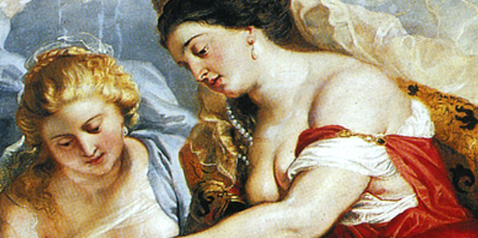
PETER PAUL RUBENS
It was by pure chance that Rubens (Siegen 1577 – 1640 Antwerp) happened to be born in Siegen. His parents, as protestants, were forced to leave their home city of Antwerp for a time, and Rubens was ten before the family were able to return. But it was in Antwerp that he trained as a painter, largely under Otto van Veen.
It was his intensive confrontation with Italian painting, however, that had a significant influence on the development of his own style. From 1600 he had made study trips to northern Italy and to Rome, studying the art of Veronese and Titian, the pictures of Mantegna and Giulio Romano. For the Duke of Mantua he was not only court painter, but also employed as a diplomat. Evidently with success, for his diplomatic skills were also utilized by others courts, in Madrid and in London.
His immense talent as a painter was greatly supported by these missions, because this sideline gave him the opportunity to make his work known to a well-heeled clientele. as a result, his pictures came to be highly appreciated by the European aristocracy. In addition he was also commissioned by the church to produce numerous altarpieces. His ingenious compositions owe their popularity not least to their widespread dissemination in the form of prints.
FURTHER INFORMATIONS
![]() Rubens online
Rubens online
The research project being carried out in association with the Staatliche Akademie der Bildenden Künste in Stuttgart (Prof. Nils Büttner) and the Bergische Universität Wuppertal (Prof. Ulrich Heinen) will for the first time make a scholarly inventory of all the sources and documents relating to the life, works and literary references of the painter, entrepreneur and diplomat Peter Paul Rubens, and publish them online.


